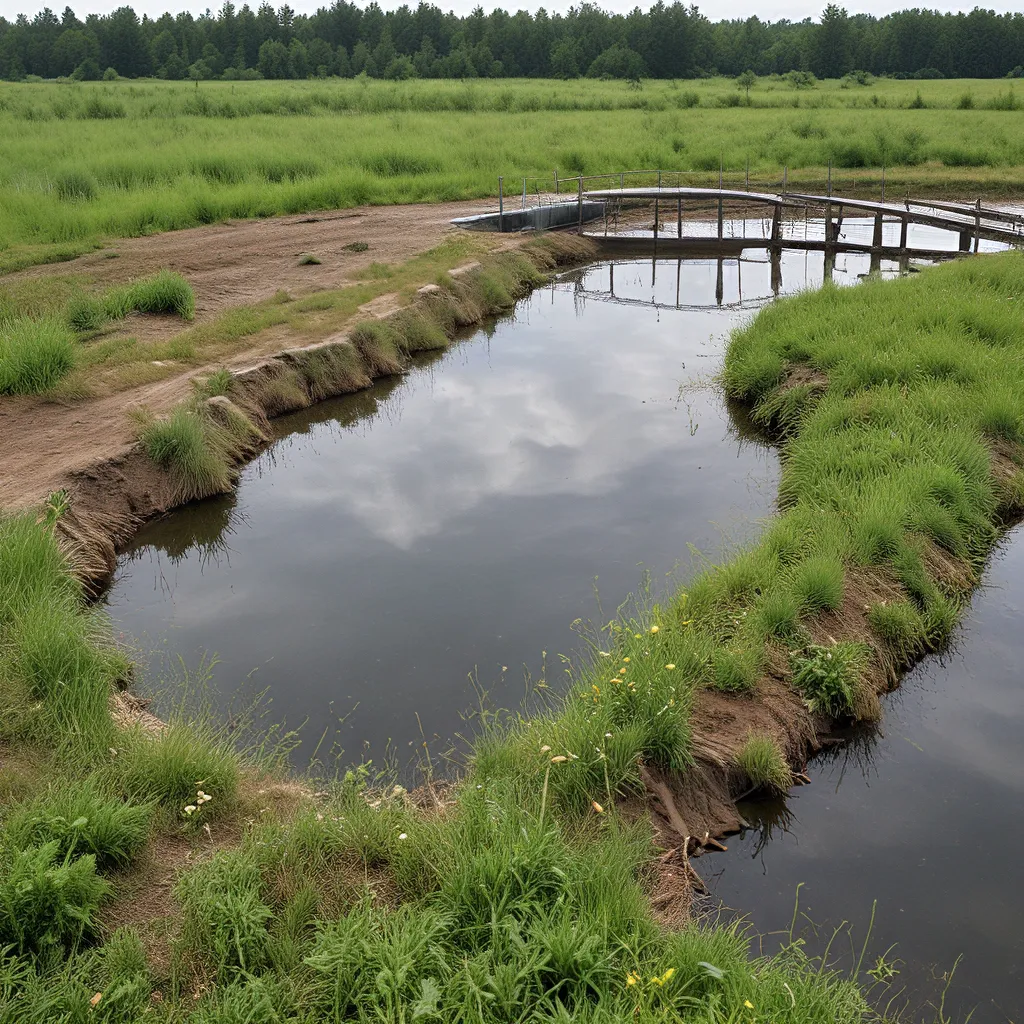
As someone who’s always been fascinated by the intersection of nature and technology, I can’t help but get excited about the concept of phytoremediation and how it’s revolutionizing the world of wastewater treatment. It’s like a real-life superhero story, where plants team up with us humans to tackle one of the most pressing environmental challenges of our time.
You see, traditional wastewater treatment methods can be energy-intensive and rely heavily on chemical processes. But what if I told you that we can harness the power of Mother Nature to do the heavy lifting? That’s where phytoremediation comes in – it’s a natural, cost-effective, and sustainable approach to cleaning up our water.
The Roots of Phytoremediation
Phytoremediation is the use of plants to remove, transfer, stabilize, or degrade contaminants in soil, sediment, and water. It’s a fascinating process that capitalizes on the incredible abilities of plants to absorb, degrade, and immobilize a wide range of pollutants, including heavy metals, organic compounds, and even radioactive substances.
The concept of phytoremediation has been around for a while, with the first documented use dating back to the 1970s. But in recent years, it’s really gained traction as a viable solution for wastewater treatment. Why? Well, for starters, it’s a lot more eco-friendly than traditional methods. I mean, who wouldn’t want to see a lush, vibrant wetland instead of a concrete tank full of chemicals?
How Phytoremediation Works Its Magic
The way phytoremediation works is truly remarkable. Plants have the ability to absorb and accumulate various contaminants through their roots, stems, and leaves. This process is known as phytoextraction. But that’s not all – some plants can even break down or transform these pollutants into less harmful compounds, a process called phytodegradation.
And the best part? Different plants excel at tackling different types of contaminants. For example, the Lemna minor (duckweed) is a superstar when it comes to removing heavy metals like cadmium, lead, and mercury from water bodies. Meanwhile, the Phragmites australis (common reed) is a master at breaking down organic compounds like pesticides and industrial solvents.
Putting Phytoremediation into Practice
So, how exactly do we integrate phytoremediation into our wastewater treatment processes? Well, it all starts with careful plant selection. We need to choose the right plants for the job, based on the specific contaminants present in the wastewater and the local environmental conditions.
Once we’ve got our plant squad assembled, we can start incorporating them into the treatment system. This might involve creating constructed wetlands, planting vegetation along the banks of natural waterways, or even using hydroponic systems to grow plants directly in the wastewater.
And the best part? Phytoremediation isn’t just a one-and-done solution. As the plants grow and thrive, they continuously absorb and degrade the contaminants, providing an ongoing, self-sustaining purification process.
The Benefits of Phytoremediation
Now, I know what you’re thinking – “Okay, this all sounds great, but what’s the catch?” Well, the truth is, there aren’t really any major downsides to using phytoremediation for wastewater treatment. In fact, it’s chock-full of benefits:
Cost-Effective: Phytoremediation is generally much more cost-effective than traditional chemical-based treatment methods, making it an attractive option for municipalities and businesses.
Environmentally Friendly: By using natural plant-based processes, phytoremediation is eco-friendly and doesn’t produce harmful byproducts or greenhouse gas emissions.
Versatile: Plants can be used to treat a wide range of contaminants, from heavy metals to organic compounds, making phytoremediation a versatile solution.
Sustainable: As the plants continue to grow and thrive, the phytoremediation process becomes self-sustaining, requiring minimal maintenance and upkeep.
Aesthetic Appeal: Phytoremediation systems can actually enhance the visual appeal of a site, transforming it into a lush, natural-looking landscape.
The Future of Phytoremediation
Now, I know what you’re thinking – “This all sounds great, but is it really a viable solution for the future?” Well, let me tell you, the future of phytoremediation is bright.
Researchers are constantly exploring new and innovative ways to optimize the phytoremediation process, from genetic engineering to nano-engineered plants. And as our understanding of the science behind it continues to deepen, I have no doubt that we’ll see even more impressive applications in the years to come.
But it’s not just the scientific community that’s getting excited about phytoremediation. The U.S. government has also recognized its potential, investing in research and development to help drive the adoption of this sustainable technology. And let me tell you, when the government gets involved, you know things are getting serious.
And speaking of serious, let’s not forget about the environmental impact of phytoremediation. By using plants to clean up our water resources, we’re not only improving the quality of the water we drink and use, but we’re also helping to protect our delicate ecosystems and the wildlife that depend on them. It’s a win-win for everyone!
So, if you’re as excited about the future of phytoremediation as I am, I encourage you to explore further. Check out the services offered by Alpha Wastewater to see how they’re incorporating this cutting-edge technology into their wastewater treatment processes. Who knows, you might just discover your own green thumb in the process!